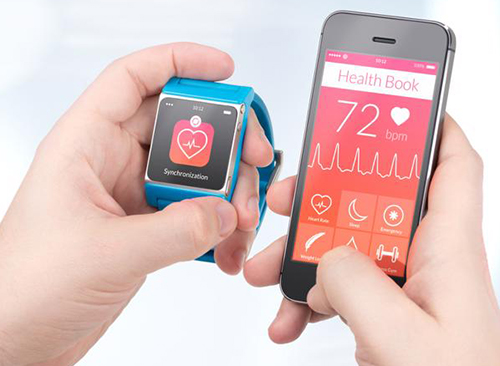Consumer demand for health trackers combined with other smartwatch capabilities is driving a trend away from simple health trackers and toward more complex devices, such as the Apple Watch, for their more powerful capabilities
It is still an open question as to whether clinical laboratories will experience an onrush of patient test data streaming at them from healthcare consumer portals and mobile devices. The popularity of wearable fitness/medical technology has been widely touted in the media. Predictions have been that these devices—when coupled with smartphone and tablet applications (apps)—would generate substantial volumes of digital patient data that would be useful for medical laboratories to capture and add to the clinical lab test data of the patients they serve.
But will these predictions of a flood of data from wearable devices become reality? Is this a trend about which medical laboratories should be concerned? Recent statistics provide some insight into these questions. For example, the sales numbers for wearable devices are significant.
Smartwatches Gaining Ground in Wearable Fitness Market
In 2016, 102.4 million wearable devices were sold, which was a 25% increase over the previous year, according to Smart Insights, a publisher for marketers. Now, several sports apparel companies, such as Adidas and Under Armour, are either launching smartwatches with health/fitness-related software and activity trackers, or eliminating their digital fitness business units altogether.
And according to MobiHealthNews, “[today’s] landscape looks awfully different.
“I think the industry is still struggling to find real, meaningful points of reference with consumers,” Dan Ledger, Principal and Founder, Path Collaborative, a Massachusetts consulting firm, told MobiHealthNews. “You hear anecdotes of people who had Fitbit (NYSE:FIT) and lost weight. But it hasn’t really been a success as a market product like a smartphone—like a lot of these companies were expecting when they were reading the tea leaves four or five years ago.”
For example, Adidas reassigned employees working in the fitness watch and sensor-enabled footwear departments to other areas, according to the Portland Business Journal. “We are integrating digital across all areas of our business and will continue to grow our digital expertise but in a more integrated way,” an Adidas spokesperson told Just-Style.
And, Nike announced its intention late last year to abandon the wearables market altogether. “It wasn’t authentic to who we were,” Jordan Rice, Senior Director of Nike NXT Smart Systems Engineering, told MobiHealthNews.
Meanwhile, Under Armour announced in 2017 that it planned to eliminate the UA HealthBox, a wearable device that offered a connected activity tracker, heart rate monitor, and smart scale tools, according to MHealth Spot. Instead, the publication reported, Under Armour was partnering with Samsung on fitness apps:
- MyFitnessPal;
- MapMyFitness;
- Endomondo; and,
- UA Record.
More Consumers Strapping on Smartwatches
Fitbit recently released the Fitbit Ionic Watch. According to Fitbit’s website, features include:
- Personal coaching;
- Heart rate monitor;
- All-day activity tracking;
- Sleep stages monitoring; and more.

The smartwatch may be the new “smart” way to go, compared to simple activity trackers. Smartwatch manufactures are partnering with biometric monitoring app developers (such as Apple Watch and IBM Watson Health, shown above) to service consumers who need to monitor, capture, and distribute their critical health data. (Photo copyright: Alexey Boldin/Shutterstock.)
Consumer Reports, citing NPD Group market data, noted smartwatches are increasingly becoming the device-of-choice for consumers who gather fitness data. Besides tracking heart rate, some smartwatch apps also release notifications about accomplishment of goals, enable access to e-mail, and more.
Consumer Reports noted:
- Smartwatches were used by 17% of US adults in the first quarter of 2015, and the remaining 83% in the demographic used activity trackers;
- Smartwatch use jumped to 38% by the fourth quarter of 2017; and,
- Smartwatches will rise to 48% of new market purchases by the fourth quarter this year.
Hardware is Hard
Fitness wearable devices have long been touted by the media for their potential to stream critical health data directly to physicians, to patients’ electronic health records, and to medical laboratories. Dark Daily foresaw in 2016 that, when paired with a smartphone or table computer, the momentum of the fitness wearables trend was substantial. For this reason, clinical laboratory managers and pathologists would want to stay current with these developments. However, today it appears companies offering wearable monitoring devices could be finding it more difficult than anticipated to capture the attention of consumers and leverage what the devices do.
In the end, sports apparel companies are not leaving the digital fitness space entirely, but simply adjusting to new consumer demands. Clinical laboratory leaders will want to keep watch on these developments as the trend evolves. The outcome could alter how patient data enters the pathology workflow.
—Donna Marie Pocius
Related Information:
Digital Marketing Strategy Wearables Statistics 2017
Sports Apparel Brands are All Walking Away from Fitness Wearables
Under Armour Kills the HealthBox Suite of Connected Devices
Adidas to Cut Digital Sports Division



